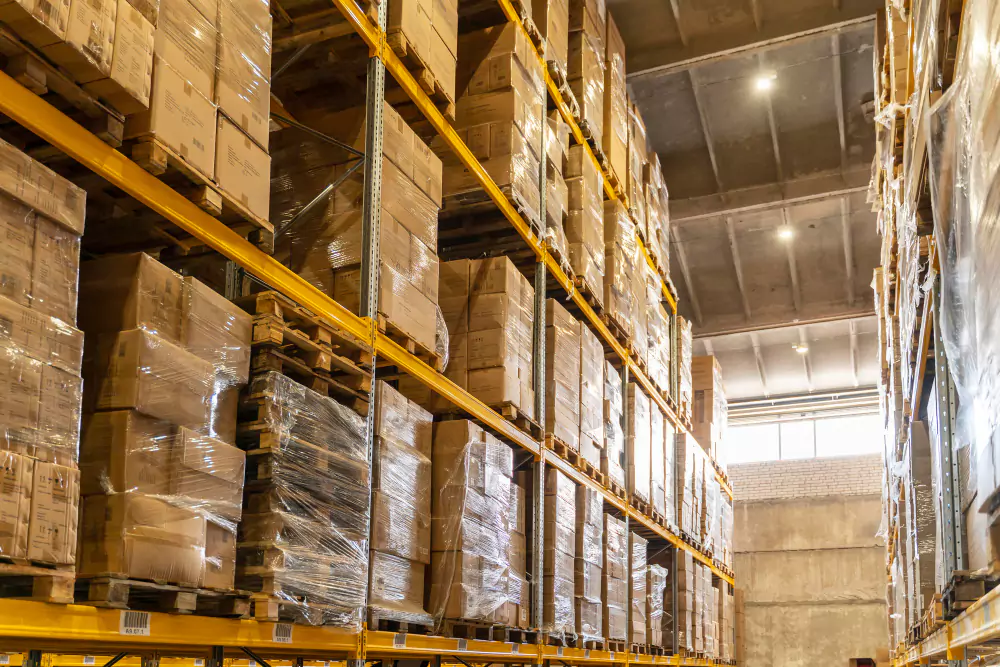23 May

Why Is a Warehouse Management System Crucial for Modern Operations?
In the age of digital logistics, a warehouse management system isn’t just a helpful tool—it’s the foundation of efficient warehouse operations. Whether you’re shipping thousands of products a day or managing a modest inventory, a WMS helps coordinate, track, and streamline tasks that would otherwise be complex and time-consuming. From inventory accuracy to order tracking, a robust warehouse management system helps businesses like those working with stacketlens stay competitive and agile in today’s demanding market.
- How Does a WMS Support Inventory Management?
- What Role Does a WMS Play in Supply Chain Optimization?
- How Does Warehouse Technology and Operations Benefit from WMS Integration?
- Are 3PL and 4PL Providers Dependent on WMS Solutions?
- How Does a WMS Improve E-commerce and Order Fulfillment?
- In What Ways Does a WMS Strengthen Logistics and Distribution?
- What Packaging and Delivery Benefits Does a WMS Offer?
- How Does a WMS Help With Inventory and Supply Chain Management?
- What Are the Core Features Every Business Should Look for in a WMS?
- Can a WMS Improve Business Operations and Calculations?
- Final Thoughts: Is Your WMS Future-Proof?
How Does a WMS Support Inventory Management?
An effective warehouse management system works hand in hand with inventory management, offering real-time visibility into stock levels, product locations, and replenishment needs. This minimizes overstocking and reduces the risk of stockouts. Rather than relying on spreadsheets or outdated methods, a WMS automates inventory tracking and ensures that every item is accounted for. With precise control over stock, businesses can lower storage costs while enhancing product availability.
What Role Does a WMS Play in Supply Chain Optimization?
Optimizing the supply chain begins inside the warehouse. A warehouse management system acts as a nerve center, allowing you to make informed decisions based on current data. By streamlining order picking, reducing shipping errors, and coordinating with suppliers, a WMS helps you achieve true supply chain optimization. The end result is faster turnaround, reduced operating expenses, and improved service levels—all crucial for long-term growth.

How Does Warehouse Technology and Operations Benefit from WMS Integration?
Today’s warehouses are driven by technology, and the warehouse management system serves as the central hub connecting those technologies. It enables barcode scanning, RFID integration, robotics coordination, and mobile access—all critical components of warehouse technology and operations. This integration ensures smoother workflows, faster fulfillment, and fewer human errors, giving businesses like stacketlens a technological edge over the competition.
Are 3PL and 4PL Providers Dependent on WMS Solutions?
Yes, both 3PL and 4PL solutions rely heavily on sophisticated warehouse management systems to deliver their services efficiently. Whether it’s managing multiple client inventories in one facility or orchestrating the movement of goods across global supply chains, a WMS helps logistics providers maintain accuracy, accountability, and speed. For companies looking to outsource logistics, a partner with a modern WMS—like stacketlens—can offer significant performance benefits.
How Does a WMS Improve E-commerce and Order Fulfillment?
The e-commerce world runs on speed and precision, and a warehouse management system ensures both. When orders pour in from multiple e-commerce platforms, a WMS automatically sorts, prioritizes, and routes them for picking and packing. The result is streamlined e-commerce and order fulfillment, with reduced errors and faster shipping times. This not only boosts operational efficiency but also enhances the customer experience.
In What Ways Does a WMS Strengthen Logistics and Distribution?
At its core, logistics is about movement and timing. A warehouse management system plays a key role in logistics and distribution by coordinating the flow of goods from storage to shipping docks and beyond. Whether managing last-mile delivery or ensuring on-time dispatches, a WMS helps align warehouse processes with carrier schedules and customer expectations. With clear visibility, decision-makers can adjust strategies in real time and avoid costly delays.
What Packaging and Delivery Benefits Does a WMS Offer?
From selecting the right box size to printing accurate shipping labels, the warehouse management system enhances every stage of packaging and delivery services. By automating packaging guidelines and integrating with delivery platforms, it speeds up the final stages of order fulfillment. This ensures that packages are not only correct but also cost-effective to ship, reducing errors and improving delivery success rates.
How Does a WMS Help With Inventory and Supply Chain Management?
A well-designed warehouse management system supports end-to-end inventory and supply chain management by offering complete transparency and control. With forecasting features and alerts for low stock, it allows proactive inventory replenishment. When tied into supply chain systems, it helps predict demand trends, manage vendor relationships, and balance inventory levels across multiple locations. This coordinated approach strengthens the entire supply chain.
What Are the Core Features Every Business Should Look for in a WMS?
Not all WMS platforms are created equal. For businesses choosing a warehouse management system, some must-have features include real-time tracking, flexible reporting, user-friendly interfaces, automation capabilities, and integration with other software like ERP or CRM systems. A scalable solution that grows with your business is critical—something that providers like stacketlens focus on offering to clients of all sizes.

Can a WMS Improve Business Operations and Calculations?
Yes, and in more ways than one. A warehouse management system gives you detailed data on productivity, costs, labor efficiency, and order accuracy. With these insights, you can evaluate performance, adjust your strategies, and improve business operations and calculations. Better forecasting, accurate billing, and streamlined resource allocation all stem from the detailed analytics a good WMS provides.
Final Thoughts: Is Your WMS Future-Proof?
If your current setup lacks automation, real-time tracking, or multi-channel integration, it’s likely time to upgrade your warehouse management system. With supply chains evolving rapidly, investing in a modern WMS ensures you stay ahead of the curve. At stacketlens, we understand what businesses need to succeed in a competitive landscape and offer WMS solutions designed to evolve with your operations.

